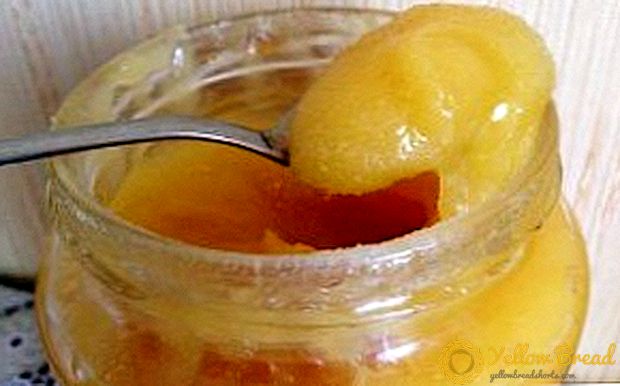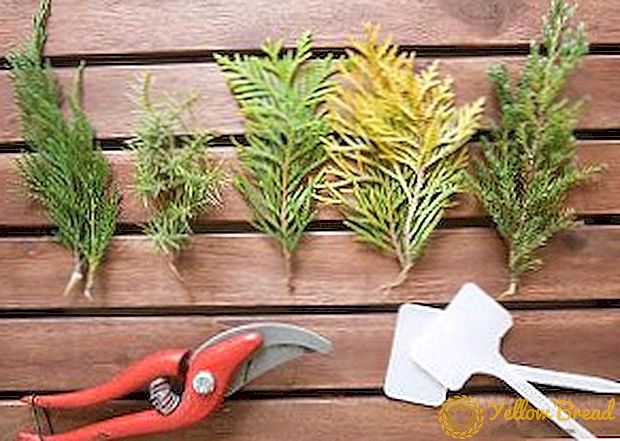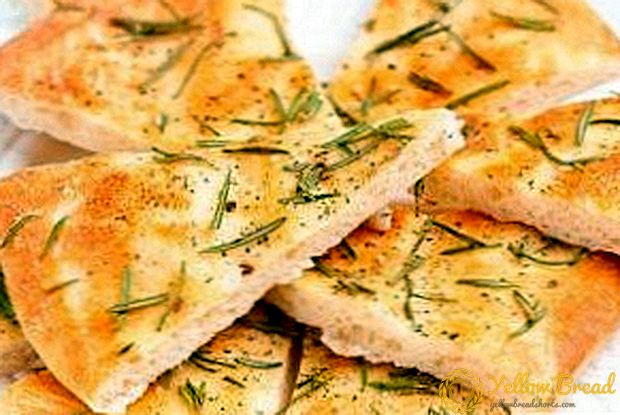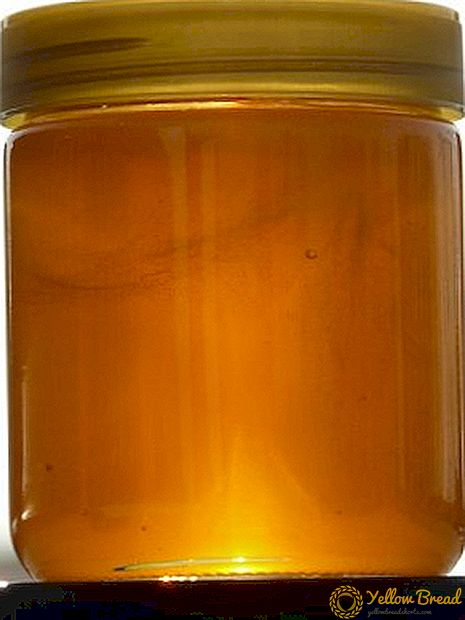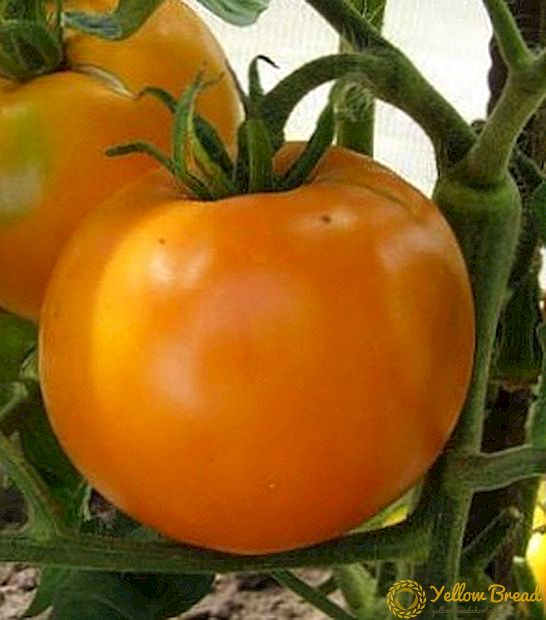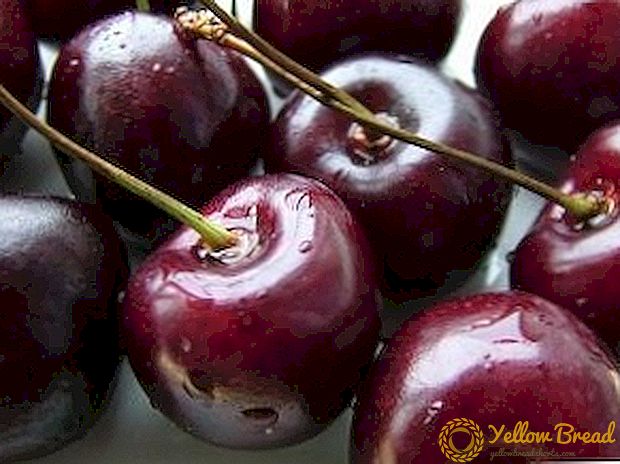 Berry bushes today can be found on almost any summer cottage. The most fruitful and at the same time useful is raspberry, which has excellent taste and loved by many children and adults.
Berry bushes today can be found on almost any summer cottage. The most fruitful and at the same time useful is raspberry, which has excellent taste and loved by many children and adults.
Further in the article we will talk about raspberry "Fairy Tale", we will provide a description of this variety, as well as figure out how to grow it on your site and what kind of care to provide to get a rich harvest.
- Description and features
- Bushes
- Berries
- Ripening and yield
- Winter hardiness
- Using
- How to choose seedlings when buying
- Choosing the right place
- Lighting
- The soil
- Site preparation
- Stepwise landing process
- Seasonal care features
- Watering
- Top dressing
- Pest and disease prevention
- Support
- Pruning
- Preparing for the winter
Description and features
The stab raspberry, or raspberry tree, is quite popular. This term refers not only to certain berry varieties, but also to methods of cultivating a crop. These varieties include raspberry "Tarusa" and "Fairy Tale". The latter will be discussed further. 
Bushes
The plant is artificially given the shape of a tree, cutting off branches that have already sprouted, and pinching the tops of young branches. As a result of such manipulations, side shoots begin to develop intensively.Usually by the first autumn the raspberry bush will more resemble a small size of a sapling. It is much more convenient to pick berries from such a tree, and the plant itself is less sick and gives a high yield. Such a culture is able to grow up to 1.5-2 m in height, gradually becoming more spreading. The roots are very similar to the roots of ordinary trees, which does not allow the plant to "crawl" throughout the garden. 
Berries
The peculiarity of the raspberry tree "Fairy Tale" is a high level of its productivity. Raspberry berries are formed very large, they look beautiful and smell good. As for taste, the fruits are very juicy and sweet. Among other things, the berries of this variety are very well amenable to transportation, since the fruits are quite dense. Also, they are not showered from the branches of the plant during ripening.  Thanks to such positive characteristics, the standard raspberry is very popular among gardeners.The plant does not take up much space on the plot, rarely gets sick, does not require much time for maintenance, and at the same time gives a plentiful tasty crop.
Thanks to such positive characteristics, the standard raspberry is very popular among gardeners.The plant does not take up much space on the plot, rarely gets sick, does not require much time for maintenance, and at the same time gives a plentiful tasty crop.
Ripening and yield
Raspberry "Fairy Tale" begins to bear fruit around the second decade of July and continues until early August. This variety is precocious. As for the yield, it is very high, since it would be possible to collect 160 centners of fruit from 1 hectare of pure plantations. One shrub gives about 5-6 kg of berries.
Winter hardiness
The level of winter hardiness of such a culture is average. It can tolerate a drop in temperature of up to -23 degrees. At the same time the plant will withstand drought perfectly. The "fairy tale" is resistant to many major diseases that can affect garden crops, but for this it is important to adhere to the conditions of proper care of the culture.
Using
As for the use of the fruits of this sort of raspberry, we can confidently say that the product is very versatile. Berries can be used fresh, you can also use them to make jams and preserves.And you can freeze a certain number of fruits, which later will be perfect for use, as they retain the aroma and taste. 
How to choose seedlings when buying
In order for the raspberry tree to quickly take root in the new plot and bear fruit well, you should carefully consider the choice of seedlings before buying them. After all, unfortunately, quite often dishonest sellers can offer painful and weakened growth, which previously grew on an abandoned plot, under the guise of high-quality standard raspberry varieties. Therefore, making a purchase of seedlings, you should remember some recommendations:
- The best option would be to buy raspberry bushes in specialized gardening stores or in nurseries. Here they usually value their reputation and offer only high quality planting materials for purchase. But the check is still better to keep.
- You can also buy seedlings from neighbors in the area or from friends. Here you can immediately see the mother plants from which the planting material is bought.
- If the purchase will be made on the market, then it is necessary to make sure that the seller has documents for the goods to be purchased.
- Purchase of seedlings somewhere along the road or from a “good grandmother” should be excluded, because only the appearance and quality of the plant cannot be determined only by the appearance of the raspberry seedling.

Choosing the right place
Before you plant a raspberry tree "Fairy Tale" and start caring for it, you need to choose the right place on the site where the culture will best grow and develop.
Lighting
It is worth noting that such a plant more like a well-lit area than shaded. It is also important that the site was covered from strong gusts of wind and drafts, because otherwise the raspberry plant will develop very slowly and may even die.
The soil
Planting on a slope where there is no flowing or groundwater will be optimal. Also, in order for the plant to quickly stick and start growing, the soil must be selected either slightly acidic or neutral, and you must remember that there is good drainage.  You also need to immediately think about how raspberries will winter in a particular plot. In particular, it should be understood whether the plant will be covered with snow in winter. If it does not, then it will be necessary to bend the branches to the ground for the winter, thus protecting them from frosting.
You also need to immediately think about how raspberries will winter in a particular plot. In particular, it should be understood whether the plant will be covered with snow in winter. If it does not, then it will be necessary to bend the branches to the ground for the winter, thus protecting them from frosting.
Site preparation
Planted raspberry trees can be both in the spring and autumn. As the bush grows very sprawling, it will need to provide a sufficient amount of space.
The soil will need fertile, but before planting it will need to be further fertilized with manure or humus. If organic is not, then you can also apply mineral fertilizers. The lack of organic and mineral fertilizers will negatively affect the rate of ripening of raspberry fruits, as well as the abundance of the crop. 
Stepwise landing process
As mentioned earlier, planting can be carried out both in the fall and in the spring. If the choice fell on spring, then it is necessary to plant raspberries around the second decade of April, and if in the fall, then it is better to plant the crimson trees in the first days of October or in the last days of September.
To begin with, it is necessary to prepare holes with dimensions 50x50 cm. The distance between such pits should be at least 1 meter in order for the grown plants to have enough space in the plot. After that, the roots of seedlings need to be lowered for a couple of minutes in a previously diluted solution of manure and then proceed to planting bushes. Roots should be gently straightened, avoiding creases and bends, and then laid in the soil and sprinkle with earth.  Experienced gardeners recommend planting raspberries in the spring rather than in the fall, because during this period the plant grows faster and easier. But in this case it is important to take into account the fact that the planting should be carried out before the buds are blooming on the raspberry seedlings. If the choice fell on the autumn planting, then the ground around each bush should be tucked up, thus protecting the lower buds from frost.
Experienced gardeners recommend planting raspberries in the spring rather than in the fall, because during this period the plant grows faster and easier. But in this case it is important to take into account the fact that the planting should be carried out before the buds are blooming on the raspberry seedlings. If the choice fell on the autumn planting, then the ground around each bush should be tucked up, thus protecting the lower buds from frost.
Seasonal care features
Having planted a fairy tale raspberry in the open field, one should also remember about the peculiarities of caring for this plant, because the standard culture needs to apply a number of important agricultural techniques.
In particular, in the spring period, it is necessary to loosen the soil around the plants with a forks to a depth of about 8 cm. Also the near-trunk trees should be mulched with peat, straw or rotted manure. A layer of mulch will need to be made about 10 cm thick. Fresh growth must be completely removed.
Watering
One of the most important aspects in the care of raspberry culture is abundant watering. It is necessary to pour a bucket of water under each plant once a week. Especially carefully monitor soil moisture will need to be at the stage of setting and ripening fruits. However, care should be taken to ensure that water does not stagnate in tree trunks, especially in wet weather, otherwise root decay cannot be avoided. 
Top dressing
In the fall of each year, 3 or 4 manure buckets should be placed under the raspberry bushes. If there is no manure, you can replace it with a mixture of peat and urea. As for nitrogen-containing fertilizing, they do not need to be used, since they will not give anything except lateral infertile branches.
The culture is in need of feeding in the first days of July, when the fruits of the raspberries begin to ripen actively. It is necessary at this stage to make both organic and mineral fertilizers. Preparing plants for the winter, in October you need to fertilize the soil with manure or humus at the rate of 5-6 kg per 1 square meter. This procedure is mulching. It will be necessary to cover the ground with an organic layer to a thickness of 7 cm, and then powder it with 2 cm of fertile soil. In the end, all layers must be carefully dig. 
Pest and disease prevention
At the onset of spring warming, immediately after snow thaws, raspberry bushes need to be treated with fungicides. With their help, you can protect the berry trees from gray rot, Septoria, rust, etc. Bordeaux liquid has proven itself well 3%.You will need to repeat this procedure in October.
Support
The standard raspberry of the "Fairy Tale" variety, which is also called the raspberry tree, has a strong, thickened trunk, so that it can be grown without using any support.
Pruning
But pruning for a tree raspberry variety is mandatory. In fact, the procedure does not differ from the same care for ordinary raspberry varieties. In the process of pruning you need to remove all old and diseased shoots that will no longer bear fruit. Many gardeners follow the method of double pruning, that is, in the process they leave only one escape of replacement. In the last days of May or at the beginning of June, it will be necessary to shorten the shoots with a length of 1 m by 10-15 cm. Thus, by the end of summer a compact shrub with 5-6 side branches will be formed. In this form, the plant will overwinter.  Re-pruning is done at the end of the spring, after all the leaves have dissolved. This usually happens in the second or third decade of May. Shoots need to be shortened by about 5-12 cm.
Re-pruning is done at the end of the spring, after all the leaves have dissolved. This usually happens in the second or third decade of May. Shoots need to be shortened by about 5-12 cm.
Preparing for the winter
If the winter is expected to be frosty, then the branches of the raspberry bush will need to be bent to the ground after the end of fruiting.Cover shoots with breathable agrofibre. If you do not carry out such an important procedure, the branches after the frost will become brittle and fragile, and sometimes they may even die.
Standard raspberry loves light and heat, but does not require unnecessarily expensive care. It is extremely convenient to grow such a form of a shrub, and the variety itself can produce a very abundant crop and high-quality fruits. 

